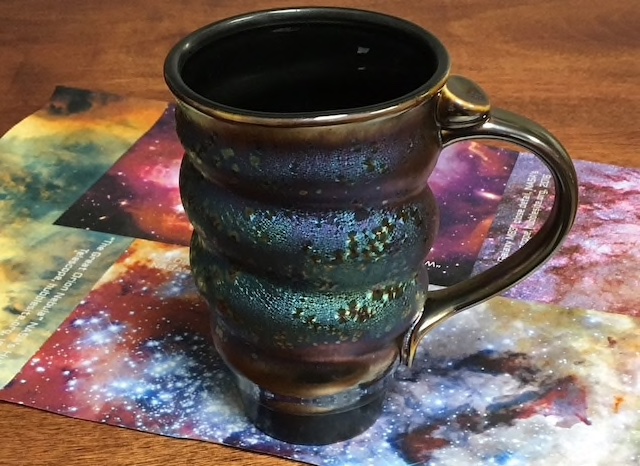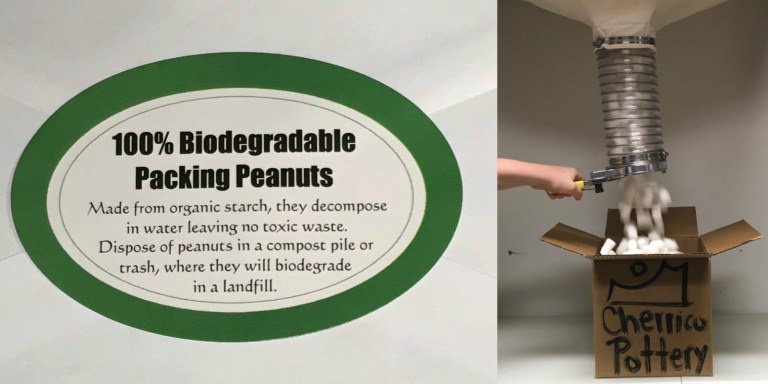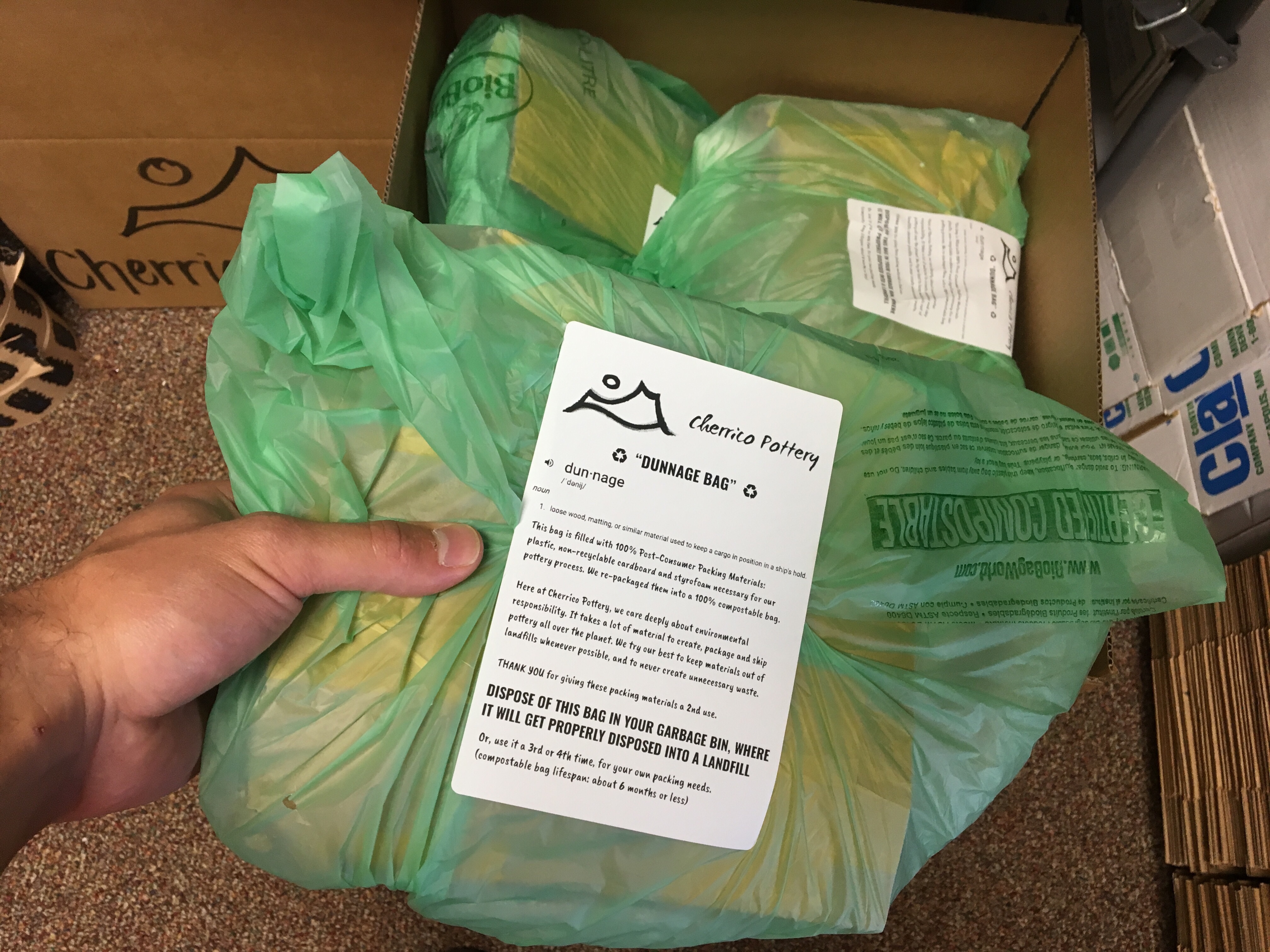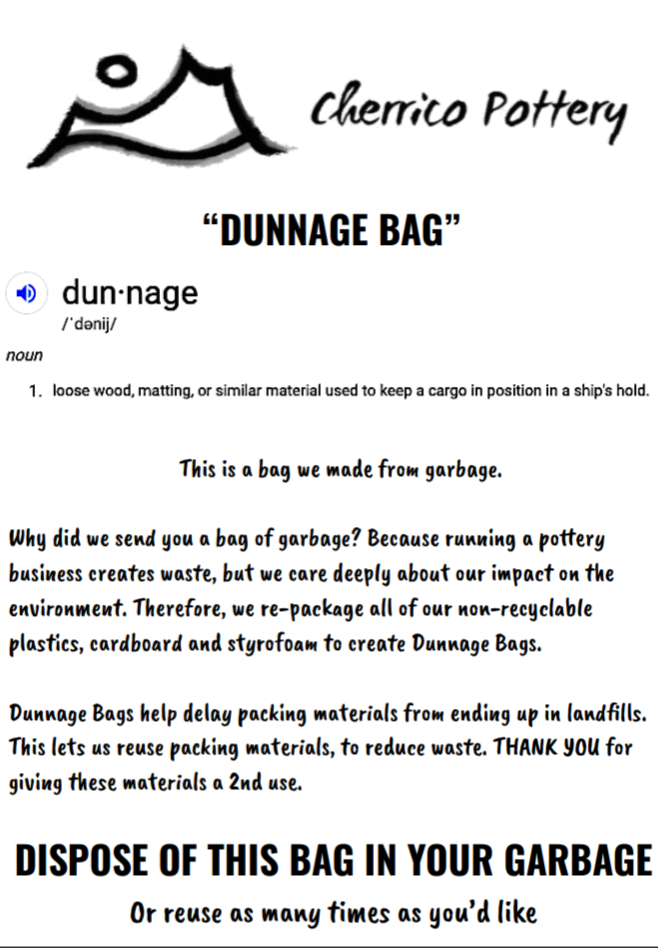This image shows 4 boxes, each filled with 20 mugs, from a city in China called Shenzhen. Joel Cherrico designed a “Factory Made Cosmic Mug” made in Shenzhen, and this is how they arrive to the Cherrico Pottery studios in St. Joseph, Minnesota, US.

That’s a lot of yellow plastic tape, and it’s not recyclable. But it’s necessary to keep the boxes from getting wet on their freight shipment halfway across the world. The mugs inside are packed with recyclable cardboard (great!) and also bubble wrap and styrofoam (bummer). There isn’t much, but even just a little bit of styrofoam makes me uncomfortable.
We unpack the mugs, thoroughly inspect each one for quality and safety, then repackage for individual shipment in our custom “stellar” wrapping and packing materials.


But what happens to the excess packing materials? Where does all the yellow tape go?
Cardboard is easy to recycle. In our state of Minnesota, US, you can learn here how they recycle cardboard— even cardboard that has plastic tape:
But what about the waste? The non-recyclable cardboard with too much yellow tape, or the non-recyclable bubblewrap or styrofoam? I would feel terrible putting this straight into the garbage.
Especially knowing that if people like these mugs and they grow with popular demand, then we will be ordering a LOT more (Chinese factories can produce thousands of mugs in a single batch) and using a LOT more packing materials.
We came up with a solution we’re proud of: “Dunnage Bags”

We repackage all non-recyclable materials into a custom “Dunnage Bag” made from a compostable plastic bag I got from the local Co-op.
Then, we use these bags to package and ship pottery to customers’ homes.
It’s not a perfect solution, but it’s better than simply throwing non-recyclable items straight into the landfill.
It also reduces our own consumption, letting us purchase fewer packing materials for when we ship pots to our own customers. This batch of 100 Chinese mugs created about 10 ft.³ of dunnage bags.
100% of the materials we got from these Chinese mugs were recycled, either in dunnage bags or the recycling bin.
Yes, these bags still end up in a landfill eventually. But we can be confident in our choice to reduce and reuse. That seems like time well spent.
We thought it was a cool way to try and reduce waste. Feel free to copy this idea if you like it, for your own recycling needs. Here is the label we use for each Dunnage Bag:

